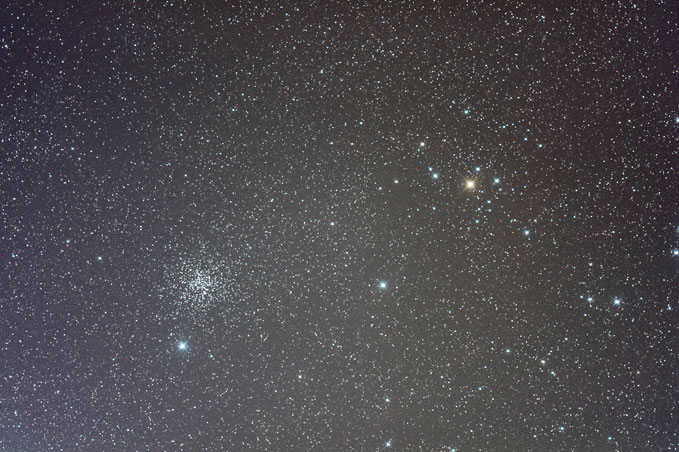| NGC2451 / Open Cluster, type d, II 2 m |
|---|
| R.A. | 07h 45m 24.0s (2000.0) |
|---|
| Dec. | -37° 58' 00" (2000.0) |
|---|
| Apparent Size | 45' |
|---|
| Real Size | N/A |
|---|
| # of Stars | 40 |
|---|
| Magnitude | 2.8 |
|---|
| Distance | N/A |
|---|
|
| NGC2477 / Open Cluster, type g, I 2 r |
|---|
| R.A. | 07h 52m 17.9s (2000.0) |
|---|
| Dec. | -38° 33' 00" (2000.0) |
|---|
| Apparent Size | 27' |
|---|
| Real Size | 45 light yrs. |
|---|
| # of Stars | 160 |
|---|
| Magnitude | 5.8 |
|---|
| Distance | 6220 light yrs. |
|---|
|
A winter constellation of Puppis in which the Milky Way crosses includes many open clusters.
This pair of NGC2451 and NGC2477 lies at the most southern position in the constellation.
A very sparse cluster on the right hand side is NGC2451 and another one fine stars crowded is named NGC2477.
NGC2451 contains about 50 member stars in about 45-arc minutes diameter, you can easily enjoy this cluster only with compact binoculars.
The cluster has a visual magnitude of 3, so maybe some of member stars can be detected by naked eyes.
NGC2477 is found at about 1.5 degrees ESE of NGC2451. You can see the cluster like nebulosity through binoculars, and you need a medium sized telescope to resolve individual stars.
NGC2477 has a brightness of about 6th magnitude, it hardly can be seen by your eyes.
The constellation of Puppis has one more pair of open clusters of M46 and M47 in northern region.
Both pairs has very different stellar density each other, it may be interesting to compare the impressive contrast of these cluster couples.
|

